

Eight named to Honorary Membership
The tenets of AIA highlight the importance of communication and collaboration with our allies and clients throughout the building industry. One of the most important messages AIA members can share through our professional society is gratitude toward those who support and uplift architects and architecture; we can acknowledge them as part of the AIA family. In this spirit, the Institute is very pleased to bestow on eight special people the title of Honorary AIA.
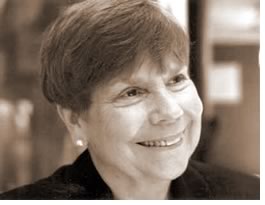 Louise
H. “Polly” Flansburgh, Hon. AIA
Louise
H. “Polly” Flansburgh, Hon. AIA
Since she founded the “Boston by Foot” in 1976 to emphasize
the extraordinary history of Boston architecture, Polly Flansburgh and
her 2,000 volunteer docents have led more than 56,000 students and 170,000
visitors on peripatetic voyages tracing the history and growth of the
city. “Polly’s idea was to encourage residents and visitors
to do what architects do—amble around the city and bask in its architectural
achievements,” writes Boston Society of Architects President David
Dixon, FAIA, in his nomination letter on behalf of the chapter. “Our
profession, as well as the community, has been the beneficiary. . . .
It is now time to honor her as she has honored us.”
Flansburgh, wife of a noted Boston architect, keeps the quality of the nonprofit program at the highest level by requiring docents—distinguished architects, historians, and engineers—to attend a six-session lecture-and-field-trip session, complete with interviews, written assignments, and a test tour. Visitors can enjoy 90-minute walks daily from May through October for a nominal fee. “I am sure that those who take her tours come away with a new way of looking at architecture, and more informed in shaping their own environments,” says Howard F. Elkus, FAIA, RIBA, founder of Boston’s Elkus/Manfredi Architects Ltd. “Polly is a great friend and promoter of architecture. She has done all this selflessly and with all her remarkable energy and tireless commitment.”
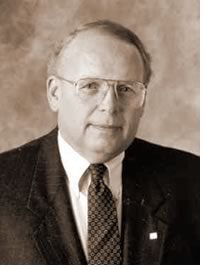 Terrance
R. Flynn, Hon. AIA
Terrance
R. Flynn, Hon. AIA
Terrance Flynn, senior advisor to the chair and president of MBNA Bank,
has served as the liaison between MBNA America and the AIA to advance
the visibility and reputation of the Institute, the American Architectural
Foundation, and the architecture profession. “Mr. Flynn consistently
demonstrates a profound appreciation and understanding of the power of
architecture on human thought and action,” writes AIA President
Thompson E. Penney, FAIA, in his letter of nomination. “No one was
a more passionate supporter of the AIA/AAF Accent on Architecture program
and the restoration of the Octagon, and no one had a greater impact in
assuring the success of both projects.” Flynn today serves as a
member of the American Architectural Foundation’s Board of Regents.
If architecture is indeed a team discipline, Flynn has time and again shown himself to be the model of an enlightened client, facilitating the magic of excellence, according to his nomination. He continues his strong support for the AIA’s growing research effort in how architecture shapes human perception, and accompanied AIA and AAF leaders in meeting with Dr. Jonas Salk to shape this effort. He also was an early supporter of the Architectural Record/ Business Week Awards and has served as a juror for that program. “I cannot think of a more passionate believer in the power of architecture in shaping our daily life than Terry Flynn,” says RTKL chair and former AAF Board of Regents chair Harold L. Adams, FAIA, RIBA, JIA.
 Tina
M. Gobbel, Hon. AIA
Tina
M. Gobbel, Hon. AIA
Tina Gobbel for the past 16 years has served first as director of administration,
then as executive director of AIA Arizona. “Tina has been tireless
in her work for the AIA, not only as the local and state level, but also
on the national level,” writes nominator Wayne D. Silberschlag,
AIA, director of the Western Mountain Region. “Her work in Arizona
has been highlighted for her dedication in making sure that the Government
Affairs program of AIA Arizona was a success.” Gobbel’s dedication
to the AIA showed through her work with a Component Assistance Team in
1997 to reorganize her chapter, and through development of a new, high-profile
headquarters in a historic building in downtown Phoenix.
On the national level, Gobbel served as the CACE representative to the National Advertising Advisory Committee; a member of the national TIMSS Task Force, which, among other initiatives, simplified the national dues invoice and developed procedures to allow members to pay their dues online; CACE representative to the national AIA Continuing Education Committee; and speaker at the Continuing Education System Providers’ Conference in Charlotte, N.C. “Tina is an impact player within our profession. She is recognized as a doer, held in the highest level of professional esteem and respect,” writes President-elect Eugene C. Hopkins, FAIA, in support of her nomination. “It is through her tirelessness, dedication, and commitment that she has raised the value of the AIA to the membership, and the role of architects in society.”
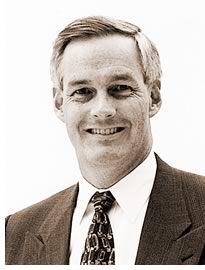 Jon
D. Magnusson, Hon. AIA
Jon
D. Magnusson, Hon. AIA
“In his active and successful professional life as a world-renowned
structural engineer, Jon Magnusson amply demonstrates a true partnership
with architects and our organization,” says AIA Seattle President
Rena M. Klein, AIA, in her nomination letter on behalf of the chapter.
“One can truly say that his brilliance as an engineer has—to
a remarkable and unmatched extent—made it possible for architects
to realize their designs for some of the Northwest’s—and the
world’s—most significant projects.” Since he became
CEO of Seattle’s Skilling Ward Magnusson Barkshire at the age of
34, Magnusson has engineered structures for award-winning buildings in
43 states and 31 countries, including Bellevue Art Museum with Steven
Holl, FAIA; Seattle’s Experience Music Project with Frank Gehry,
FAIA; and Benaroya Hall with LMN Architects. He has garnered 117 awards
for design excellence in the last 16 years and was named 2002 Consulting
Engineer of the Year by the American Council of Engineering Companies.
Following the September 11 terrorist attacks on the World Trade Center (which his firm had engineered in the 1960s), Magnusson granted more than 100 interviews to help the public understand how engineering had allowed many to survive. He also has played a leadership role in development in Seattle’s branch of the Architecture Construction Engineering program, offering multidisciplinary design mentorship to high school students. “Jon is a unique combination of brilliant structural engineer; collaborative designer, teacher, and mentor; and engaged humanist,” says James O. Jonassen, FAIA, managing partner of NBBJ, with whom Magnusson recently collaborated on the retractable-roofed Safeco Field, and the U.S. Federal Courthouse in Seattle. “He has brought not only a continuous push for design excellence with innovative ideas for shaping and achieving desired form, but also great contribution in organizing process to enable close collaboration between design disciplines.”
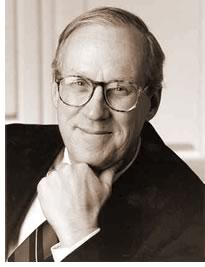 Richard
Moe, Hon. AIA
Richard
Moe, Hon. AIA
As the seventh president of the National Trust for Historic Preservation,
Richard Moe has “for the past 10 years been an advocate for many
of this issues that are at the heart of our historic and architectural
culture,” says AIA Philadelphia’s President Peter H. Brown,
AIA, and Executive Director John R. Claypool in their nomination on behalf
of the chapter. Through his position, Moe has led the nation to an increased
understanding of America’s rich heritage of historic buildings and
has inspired countless citizens to find ways to ensure that this heritage
will be kept alive as a meaningful link with the past and a powerful tool
for revitalization.
Under Moe’s stewardship, the National Trust has become a nationally recognized and effective advocate for controlling sprawl and encouraging smart growth throughout the country. He also has guided the organization from dependence on federal appropriation to complete reliance on private-sector funding. Last year, the National Trust became the first organization to win the National Humanities Medal, presented to those “whose work has deepened the nation’s understanding of the humanities, broadened our citizen’s engagement with the humanities, or helped preserve and expand Americans’ access to important resources in the humanities.” Harvey B. Gantt, FAIA, former mayor of Charlotte and founder of Gantt Huberman Architects, writes that Moe is “one of the most significant leaders in America over the past 10 years in the field of historic preservation. … He is a real friend to the design community, including to architects and the architecture we have produced.”
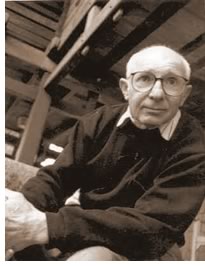 Marvin
Rand, Hon. AIA
Marvin
Rand, Hon. AIA
“Marvin Rand’s photographic work is synonymous with the history
and progress of architecture in America,” says nominator Michael
Hricak, FAIA, AIA regional director from California. “The AIA archives
are brimming with images composed and recorded by Marvin Rand, from work
of young struggling individuals and firms to those we consider ‘masters.’
If the Institute is truly its members, then Marvin Rand has been serving
the Institute for over 50 years.” Rand’s best-loved photographs
include his work with Louis Kahn and Dr. Jonas Salk as project photographer
of the Salk Institute in La Jolla, Calif.; shoots of Rodia’s Watts
Towers in Los Angeles; and his records of historic projects by California
masters Greene & Green and Irving Gill.
Rand’s collaborators over the past half century have included Kahn, Cesar Pelli, Charles Moore, Victor Gruen, Frank Gehry, and Ray Kappe. Throughout his career, Rand also has supported the work of young architects and has assisted them in recording their work and getting it published. “Working with him, I have found his professionalism and creative craftsmanship to be of the highest order,” writes Frank Gehry in support of Rand’s nomination. “In addition, his tireless, beautiful, and loving documentation of many of California’s greatest landmark buildings over the years constitutes an invariable, unique contribution to our cultural heritage, from the Irving Gill exhibit of the 1950s, the earliest I recall seeing, to the present.”
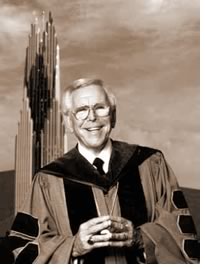 Rev.
Robert H. Schuller, Hon. AIA
Rev.
Robert H. Schuller, Hon. AIA
Rev. Robert Schuller, world-renowned senior pastor and founder of the
Crystal Cathedral in Garden Grove, Calif., has been a friend to architecture
for decades. He served as public director on the 1986 and 1987 AIA boards
and delivered the unforgettable keynote speech (to a standing ovation)
at the 1989 AIA national convention in St. Louis. “Apart from his
service as a wise counselor, Reverend Schuller is the very model of an
enlightened client,” writes AIA Executive Vice President/CEO Norman
L. Koonce, FAIA, in his nomination statement. “The California campus
where his international ministry is housed features the work of three
renowned architect: Richard Neutra, FAIA; Philip Johnson, FAIA; and Richard
Meier, FAIA.” Koonce also points out that in Schuller’s 30
books, the author frequently references the power of architecture in enriching
human experiences, particularly in worship.
“He always wanted the best possible architecture and materials, and he was unceasing in his efforts to raise the funds to design and build this Cathedral. The building is one of my favorites…” writes Philip Johnson, FAIA, in support of Schuller’s nomination. “There is no doubt in my mind that without Dr. Schuller, none of the buildings on the campus of his church would have been designed or built. His enthusiasm and dedication were the driving force for all of us who worked with him.”
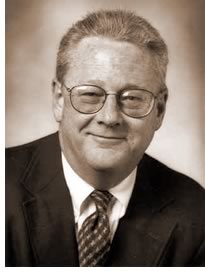 Tallman
Trask III, Hon. AIA
Tallman
Trask III, Hon. AIA
For 30 years, Tallman Trask has worked as a university administrator,
guiding the building and development of such institutions as the University
of Washington and Duke University. “While his perceptiveness and
sensibility have made him a virtual colleague in the design arena, it
is the broad spectrum of Tallman’s talents as an executive-level
administrator that have made him such a powerful contributor to the campus
environment,” says nominator AIA Los Angeles Board Member Buzz Yudell,
FAIA, whose firm Moore Ruble Yudell has worked with Trask over the past
17 years. “We have come to know Tallman as a spirited ally and trusted
friend in the cause of architecture and planning.”
“I have been most impressed with Tallman’s intelligence, resourcefulness, and his commitment to good architecture,” writes AIA Gold Medalist Cesar Pelli, FAIA. “His actions go beyond supporting good design; he has a genuine and consistent concern for the physical quality of the whole campus.” The noted works completed under Trask’s guidance include the University of Washington, Tacoma master plan and science building (both by Moore Ruble Yudell Architects & Planners and LMN Architect); the University of Washington, Seattle center for electrical engineering (by Kallmann McKinnell & Wood Architects Inc.), physics and astronomy building (Cesar Pelli & Associates Inc.), and the school of fisheries and ocean sciences department (Bohlin Cywinski Jackson) and the Duke University Perkins Pavilion (Duda Paine Architects and Shepley Bulfinch Richardson Abbott).
Copyright 2003 The American Institute of Architects.
All rights reserved. Home Page ![]()
![]()
 |
||
|
|
||